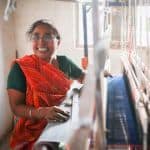Too Much Money Chasing Too Few Deals? Why the Creative Economy Could Be the Next Big Focus for Impact Investing
Impact investing is going mainstream. Don’t take my word for it, that’s what Forbes, McKinsey & Company and the World Economic Forum say. Increasingly, this capital is aligned with the United Nations’ Sustainable Development Goals, according to the Global Impact Investing Network (GIIN) and TONIIC.
Impact investors today can focus their capital on hurricanes, drought, education, health, smallholder farmers, women, youths, homelessness, recidivism, climate change, Africa, India, Latin America – and many more issues, groups and geographies. But will the sector come to a point where too much well-intentioned money will start chasing too few high-impact deals? And when and if that happens, where will this new capital go to do well and do good? Is there a segment of the economy that heretofore has been missed by the altruistic investor?
Even with all that’s available to impact investors, I believe there is something missing: The creative economy.
The creative economy is the economy of ideas. It includes art, design, culture, entertainment and media, fashion, food, architecture, game design, industrial design, music, film, books, theater, dance and more. The creative economy reflects who we are, where we come from, what we love, where we live – and what’s coming next.
Globally, the creative economy is $2.25 trillion (3 percent of the world’s economy). A recent report by consulting firm EY characterized creative and culture industries – the source of 29.5 million jobs globally – as fueling the entire global economy, particularly in emerging economies where they are a major driver of informal jobs. Creativity and culture are so important they are incorporated into the United Nation’s Sustainable Development Goals.
Last year, I launched Upstart Co-Lab to unleash more capital for creativity. We help investors see the potential the creative economy offers for doing well financially, and doing good for workers, communities and the planet. We help socially-minded creatives to connect with capital that will enable them to stick to their values while using the market to scale their ideas. We believe that the creative economy will be the way cultural Institutions, artist-endowed foundations and creatives themselves join the impact investing mainstream.
The way we see it, there are three reasons for impact investors to invest in the creative economy:
- Portfolio Diversification: Focusing on the creative economy brings a whole new cohort of potential companies (in industries like food, fashion, media and design) and real estate opportunities (like cultural corridors, innovation districts and inclusive creative workspace) into view. This new segment of the economy offers impact investors the opportunity for portfolio diversification, which has benefits for both financial and social returns.
- More Impact: The creative economy connects impact investors with more ways to achieve the social impact they already care about. Investors focused on the environment or quality jobs for workers can achieve their goals by investing in ethical fashion. Investors who care about good health or land stewardship can invest in sustainable food. Investors focused on education and our young people can gain alignment by investing in social impact video games and apps. You don’t have to be an art collector to understand that creativity is a good investment.
- It’s the Future: The global creative economy is growing at 9 percent annually, which means we have a chance today to shape the future. Creative entrepreneurs are starting social purpose businesses because they want to be a positive force and see the potential to use the market to scale. Impact investors have a role to play to help these creative entrepreneurs succeed. If impact investment capital connects with socially-focused creatives, together they can shape a creative economy that is inclusive, equitable and sustainable as it grows. The opportunity for good is just too big to miss.
Here are three examples of how impact investors are already having a global impact by focusing on the creative economy:
- New York City-based Maiyet is an ethical luxury, fashion brand selling apparel, accessories and jewelry. Maiyet partners with artisans in India, Indonesia, Kenya, Mongolia, Peru, Bolivia and Thailand. The company’s investors include Richard Branson (Virgin) and Eric Schmidt (Google). Maiyet works closely with NEST, a nonprofit dedicated to training and developing artisan businesses.
- The HEVA Fund invests in the transformative social and economic potential of the creative economy sector in East Africa. In the last five years, HEVA has invested in more than 20 creative businesses in fashion, digital content, crafts and décor from its offices in Nairobi.
- NOVICA is a marketplace connecting artisans and customers. With a focus to “Connect, Empower and Preserve,” since 1999 NOVICA has sent more than $80 million to artisans around the world. NOVICA is now raising $7.5 million in impact capital to fund an expansion. Current investors include National Geographic and the International Finance Corporation.
It’s still early, and targeted investments in ethical fashion, sustainable food and social impact media are just starting. But creativity is having its moment. Corporate CEOs report that creativity is crucial to their business, one of the most important skills for leaders, and what they look for in their workforce. With Kickstarter, Indiegogo and other crowdfunding platforms channeling billions of dollars to support creative projects, creativity has the power of a movement.
So, what’s next for impact investing? I’m betting on the creative economy.
Laura Callanan is the founding partner of Upstart Co-Lab.
Photo by David Clode on Unsplash
Homepage photo: Marco Verch, via Flickr
- Categories
- Investing



